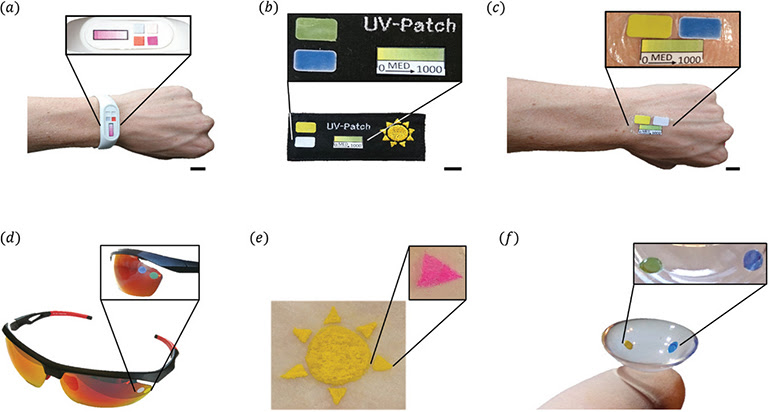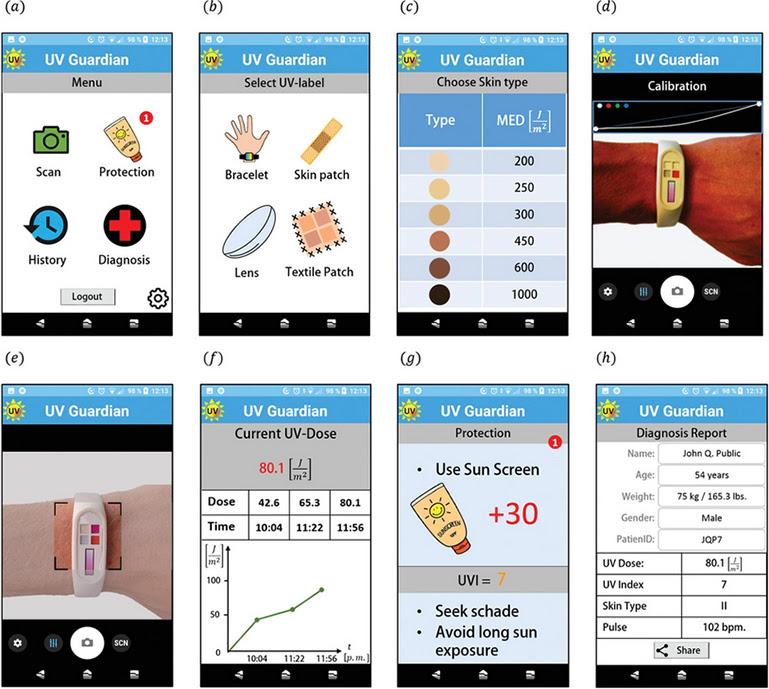FEBRUARY 6TH, 2020 MEDGADGET EDITORS MATERIALS
Exposure to ultraviolet (UV) light can lead to the development of skin cancers, so limiting how much time one spends under the Sun’s rays and using sunscreen when necessary is critically important. Currently, there are few tools available that notify users of their UV exposure, especially those that are easy to wear, non-intrusive, and can be used even while at the beach.
Researchers at the Technical University of Munich in Germany have now come up with a way to create all sorts of devices that change color when exposed to ultraviolet light. These include contact lenses, sunglasses, skin patches, and even tattoo inks. Designers of products can use various colors and the rate of color change can be pre-programmed by the manufacturer of a given device.

Smartphone readout algorithm utilizes the CMOS camera. a) Home screen with the option to scan a wearable device, view suggested protection methods, display the scan history and a diagnosis report. b) Selection of a UV‐label from a bracelet, skin patch, contact lens, and textile patch. c) Choosing skin tone. d) Color and brightness compensation under ambient light. e) Scanning a UV‐label (bracelet). f) The history of recorded values and graphical illustration of the measurement results. g) Suggested protection method based on the UV‐dose and live UV index. h) Diagnosis report of specific user information and option to share data with a dermatologist.
In order to accurately measure one’s UV exposure based on the change in color of a device such as a skin patch, the researchers created an app that uses a smartphone’s camera to identify the current color of the color-changing ink that the Munich team developed.
The new ink changes color between wavelengths of 280 and 400 nanometers, which is mostly in the violet range, but it can be mixed with other colors to actually look like the change is happening in a different color range. This approach can give users a way to immediately estimate their UV exposure with the naked eye, but also provide a more accurate, smartphone powered, way to accurately measure that exposure.
Study in Advanced Functional Materials: UV‐Sensitive Wearable Devices for Colorimetric Monitoring of UV Exposure


Leave a Reply